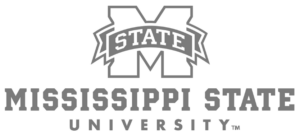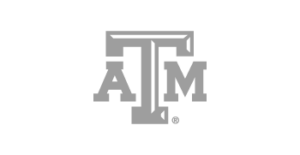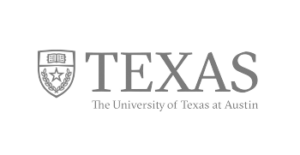Two regional university partnerships will train researchers to take their research to market so they can improve the economy and society.
The traditional path from research to market is taking too long in today’s fast-moving society, so research universities are working with the National Science Foundation to pick up the pace.
That’s where the I-Corps program comes in. The NSF provides grants to regional university partnerships — called I-Corps nodes — that will train teams to discern whether the technology they have researched has market potential.
Last week, NSF added two more I-Corps nodes to the five it already has: Southern California and Texas. Over the next three years, the two nodes will receive $3.75 million each to support innovation education, research and infrastructure in their regions.
While hundreds of millions of dollars go into university research, the results of that research don’t always make it to the application stage.
“Many times the faculty researchers are so interested in the technology or the magic behind that technology and really don’t understand the ability to put it in the marketplace,” said Richard H. Lester, executive director of the Center for New Ventures and Entrepreneurship at Texas A&M University, which is part of the Texas node.
And if they do understand how to get the technology in the marketplace, it may take 15 to 20 years by the time the research is complete and a large corporation goes through its vetting and development process. Research needs to go to market faster and earlier, and that’s starting to happen as universities begin testing their research in the marketplace as soon as it leaves the lab, said Yannis Yortsos, principal investigator of the NSF grant for Southern California and dean of the USC Viterbi School of Engineering.
This faster process that the I-Corps program is designed to promote will save a lot of time and money as researchers commercialize technology that comes out of universities, Lester said. And through training in the I-Corps curriculum provided at the different nodes, a team of three — that includes a faculty researcher, a graduate student and a startup expert mentor — will hopefully discover that their technology does meet a market need. Though they could also find out that their technology needs tweaking or needs to be scrapped.
In the technical world where universities conduct research, much of the economic gains in innovation come from tinkering and researching in fields such as engineering and physical sciences, Yortsos said. Universities have a direct impact on society when they find different ways to improve health, extend the average life span and make life better for everyone.
“The whole goal of the support of the federal research agencies as well as corporate is to develop a new innovation that will improve the economy and create jobs, create new economic growth, and therefore help the betterment of society,” Yortsos said.
USC is leading the I-Corps node in Southern California and working with UCLA and Caltech to train teams in the health-care engineering and aerospace and defense fields, which Southern California is known for.
In the last year or two, Southern California has been building up its start-up communities in areas including Pasadena and Silicon Beach. With this grant, partner universities will add on to what’s already happening and strengthen the entrepreneurial work there.
By helping research teams take their idea from research to the market, these universities will be training people who can create more jobs, which helps the economy and society. New companies create most of the new jobs in the economy because established corporations simply lay off people and replace them, said Andrea Belz, director of the NSF Node in Southern California. And the contribution of different jobs is highest when companies have proprietary information or a special secret sauce.
“The research that goes on in laboratories in the academic world typically forms the secret sauce of these companies,” Belz said. “If you want to create new jobs and if you want to create valuable jobs, the way to do it is with new companies that have secret sauce.”
In Texas, The University of Texas at Austin, Texas A&M and Rice University have three things they would like to accomplish along these lines:
- Have faculty train teams in the I-Corps methodology so they can translate their technology into commercially viable entities, which will hopefully make the world a better place, Lester said.
- Learn from this process and methodology so that their own university faculty, students and staff can learn how to be better entrepreneurs.
- Spread this methodology throughout their region, university systems, state colleges and the Southwest with the support of universities throughout Texas.
The I-Corp methodology includes a one-page look at a team’s potential business and goes through a number of questions including the following:
- What is your value proposition?
- How is your technology unique or different from other technology?
- Who are your customers?
- What is your revenue model?
The teams will come to one of the three Texas universities, spend three to four days training there and talk to customers about the product market. When they go back to their home base, they will have homework to do, including looking for market feasibility and revenue sources.
After a few months, they will come back to campus for a review of where they’re headed. The teams will also create a hypothesis and test it in the marketplace to see if it’s valid. Depending on how they did, they’ll either pivot toward a new direction or proceed on course, Lester said.
Texas will focus on entrepreneurship and STEM education for its grant. Entrepreneurship is a catalyst and engine for development in the United States. And education is a way to reach more people than they could have otherwise.
Specifically, the Texas universities are honing in on K-12 schools and community colleges.
At the K-12 level, the Texas team plans to experiment with ways to present the curriculum in that environment so they expose students early to science. In sixth grade and high school, students might not know that science is an option, so this will help them understand core science, technology and commercialization concepts.
The community colleges do not have any direct entrepreneurship and startup ecosystems, though some are starting to work toward that end in science. The hope is that the universities can partner with community colleges across the state and region to expose them to the I-Corps curriculum and experiment with different ways to pair up community college faculty and students with university faculty researchers and doctoral students.
That way, students from two different college levels can develop a relationship, and the doctoral students can provide guidance as to where they could go next, said Heath Naquin, executive director of the southwest node and managing director of the Center for Next Generation Photovoltaics at The University of Texas at Austin.
“If we can take some of the content and the lessons from the I-Corps program and transition that over time into community college environments and students in those environments, then we have the potential to make a much larger impact for people further on in their career and in their lives,” Naquin said.
By Tanya Roscorla, Managing Editor
Center for Digital Education
When researching medications, you should always rely on expert commentary – read the article about Generic Cialis on https://worldmedicalguide.com/buy-generic-cialis.htm








